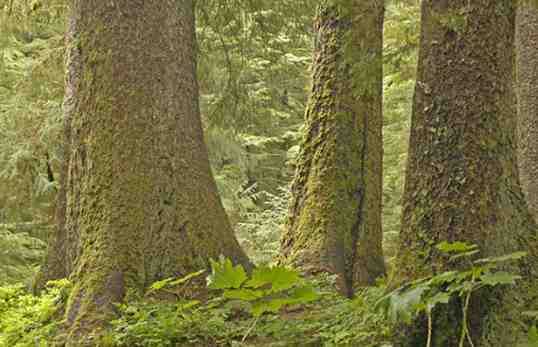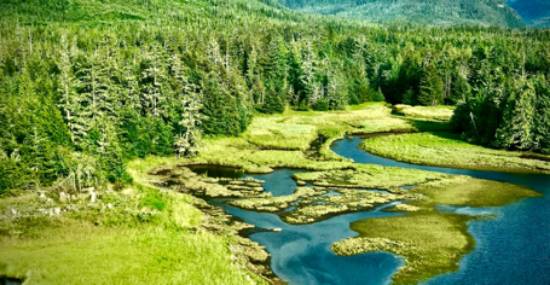WASHINGTON, July 3, 2013 – Agriculture Secretary Tom Vilsack today outlined a series of actions by the U.S. Forest Service and U.S. Department of Agriculture (USDA) to conserve the old-growth forests of the Tongass National Forest.
The actions will focus on speeding the transition to management of second-growth (previously harvested) forests.
At 17 million acres, the Tongass is the largest national forest in the United States. It contains large stands of old-growth rainforest, and provides world-class recreation and fishing while supporting local communities through a variety of economic activities.
|
|
“The Tongass National Forest is a national treasure. Today, I am outlining a series of actions by USDA and the Forest Service that will protect the old-growth forests of the Tongass while preserving forest jobs in southeast Alaska,” said Secretary Vilsack. “I am asking the Forest Service to immediately begin planning for the transition to harvesting second growth timber while reducing old-growth harvesting over time.”
The actions announced today will conserve the outstanding coastal rainforests of the Tongass. They will ensure a smooth transition to second-growth forests so the forest industry can continue to provide jobs and opportunity in Southeast Alaska.
“The actions we are taking today create an opportunity to demonstrate that conservation of old-growth forests can be economically beneficial for communities,” said Forest Service Chief Tom Tidwell. “The transition will maintain an integrated wood products industry and help sustain communities in southeast Alaska. Finally, we can move beyond the controversial debate on old-growth forests and focus our resources on supporting jobs.”
A persistent challenge on the Tongass National Forest has been low availability of second growth timber for use by the forest industry, making a transition away from old growth timber difficult. Flexibility, like that provided in the Southeast Alaska Native Land Entitlement Finalization and Jobs Protection Act, recently passed by the Senate Energy and Natural Resources Committee, is critical to making second growth forest available for timber harvest.
As part of the actions announced today, Secretary Vilsack noted USDA’s commitment to achieving this flexibility. Additional actions announced today by the Secretary include:
- Allocating Forest Service staff and financial resources to development of second growth sales.
- Developing a new work plan for the Tongass that includes a growing mix of second growth projects.
- Asking the Forest Service to consider an amendment to the Tongass National Forest land management plan that would speed the transition.
- Supporting research into second growth management and market development.
- Working with USDA’s Rural Development mission to facilitate retooling of the forest industry so that second growth timber can be harvested and processed economically.
- Approval for establishment of a Federal Advisory Committee to provide stakeholder input on the transition to second growth.
The Secretary’s memorandum comes after the Tongass National Forest announced Monday a large timber sale – the Big Thorne sale – that includes significant old growth timber. This sale is important to provide an existing supply of timber for forest industry in the region, thereby affording adequate time for the Forest Service to develop second growth sales. The intent of the actions announced today is that second growth timber sales will continue to increase, and within 10 to 15 years that the vast majority of timber sales on the forest will be from second growth forests.
The Secretary’s memorandum is available online at https://www.ocio.usda.gov/document/sm1044-009-%E2%80%9Caddressing-sustainable-forestry-southeast-alaska.





